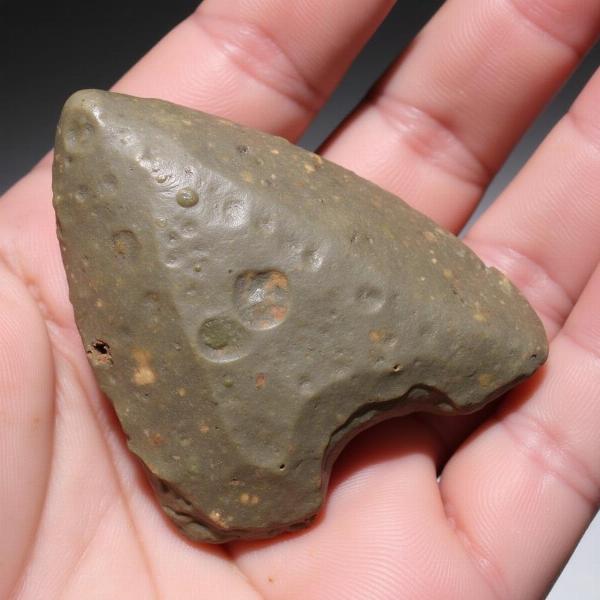Hand axes, those iconic tools of early humans, hold a significant place in our understanding of prehistory. But what exactly do we call them in Hindi? This guide explores the various Hindi terms for “hand axes,” delving into their cultural and linguistic nuances. We’ll also examine the importance of these tools in archaeology and their connection to human evolution.
What Does “Hand Axe” Mean in Hindi?
The most common Hindi translation for “hand axe” is हस्त कुल्हाड़ी (hast kulhaadi). This term combines “hast” (hand) and “kulhaadi” (axe), directly reflecting the tool’s function and handheld nature. However, other terms can be used depending on the specific context, including:
- पाषाण कुल्हाड़ी (paashan kulhaadi): This term emphasizes the stone material of the axe, with “paashan” meaning stone.
- हथियार (hathiyar): A more general term meaning “weapon” or “tool,” this can be used to refer to a hand axe in a broader sense.
- औजार (auzaar): Similar to “hathiyar,” “auzaar” means tool and can encompass hand axes.
The Significance of Hand Axes in Archaeology
Hand axes are crucial artifacts in archaeology, providing valuable insights into the technological and cognitive abilities of early humans. Their presence at archaeological sites helps us understand migration patterns, resource utilization, and the development of toolmaking techniques.
Understanding Early Human Behavior
The careful crafting of hand axes reveals a level of planning and forethought, suggesting a significant leap in cognitive abilities compared to earlier hominins. The standardization of hand axe shapes across different regions also hints at the potential for cultural transmission of knowledge.
Hand Axes and Human Evolution
Hand axes are primarily associated with Homo erectus and Homo heidelbergensis, marking a significant step in human technological evolution. The development and use of hand axes coincided with the expansion of hominins out of Africa and into other parts of the world.
The Acheulean Tool Culture
The Acheulean tool culture, characterized by the production of hand axes, spanned a vast period of time and geographical area. This culture represents a significant milestone in human prehistory, demonstrating the increasing complexity of human toolmaking and behavior.
 Acheulean Hand Axe Example
Acheulean Hand Axe Example
Conclusion
Understanding the meaning of “hand axes” in Hindi, along with their archaeological and evolutionary significance, provides a richer understanding of human prehistory. The terms हस्त कुल्हाड़ी (hast kulhaadi) and पाषाण कुल्हाड़ी (paashan kulhaadi) accurately capture the essence of these tools, while terms like हथियार (hathiyar) and औजार (auzaar) place them within a broader context of tools and weapons. These tools offer a tangible link to our distant past, revealing the ingenuity and adaptability of our ancestors.
FAQ
- What is the primary use of a hand axe? Hand axes were likely used for a variety of tasks, including butchering animals, processing plant materials, and woodworking.
- Which hominin species is most associated with hand axes? Homo erectus and Homo heidelbergensis are primarily associated with the production and use of hand axes.
- What is the Acheulean tool culture? The Acheulean is an archaeological industry of stone tool manufacture characterized by distinctive oval and pear-shaped “hand-axes” associated with early humans.
- Where have hand axes been found? Hand axes have been found across Africa, Europe, and Asia, indicating the wide geographical distribution of early humans.
- What does the term “bifacial” mean in relation to hand axes? Bifacial refers to the flaking on both sides of the stone, creating a sharp edge.
- How do hand axes contribute to our understanding of human evolution? Hand axes demonstrate the increasing complexity of hominin toolmaking and cognitive abilities.
- What is the difference between “hast kulhaadi” and “paashan kulhaadi”? “Hast kulhaadi” emphasizes the hand-held nature of the tool, while “paashan kulhaadi” highlights the stone material.
consolidated charges meaning in hindi
zabt meaning in hindi
mineral wealth meaning in hindi
payroll company meaning in hindi
Meaning-Hindi.in is your one-stop solution for all your Hindi translation needs. We offer a wide range of professional translation services, specializing in business, legal, technical, website localization, educational, and specialized translations. We also provide quick and accurate translation services for urgent requests. Contact us today for high-quality, culturally sensitive translations. Email: [email protected], Phone: +91 11-4502-7584. Let Meaning-Hindi.in bridge the language gap for you!